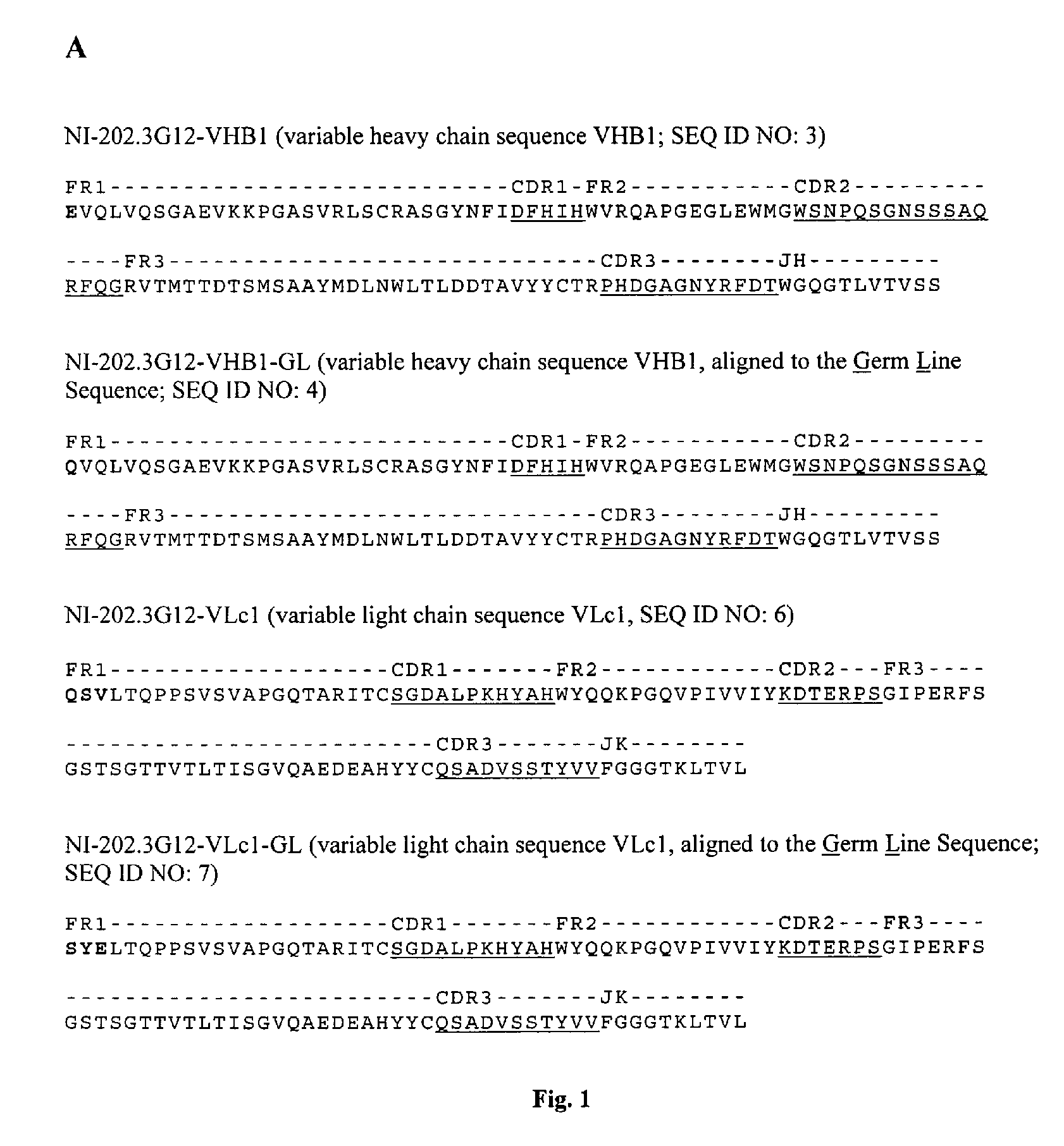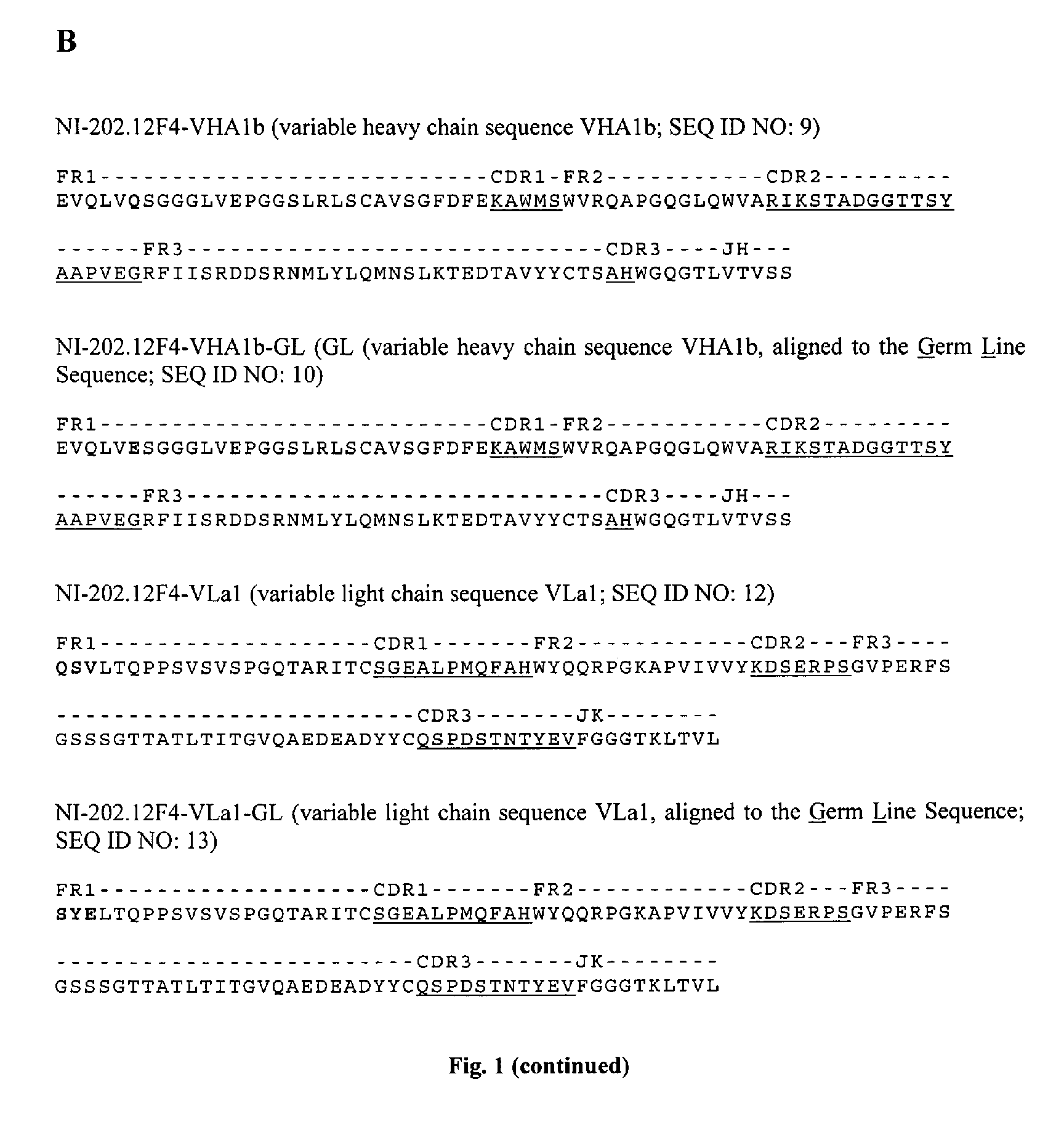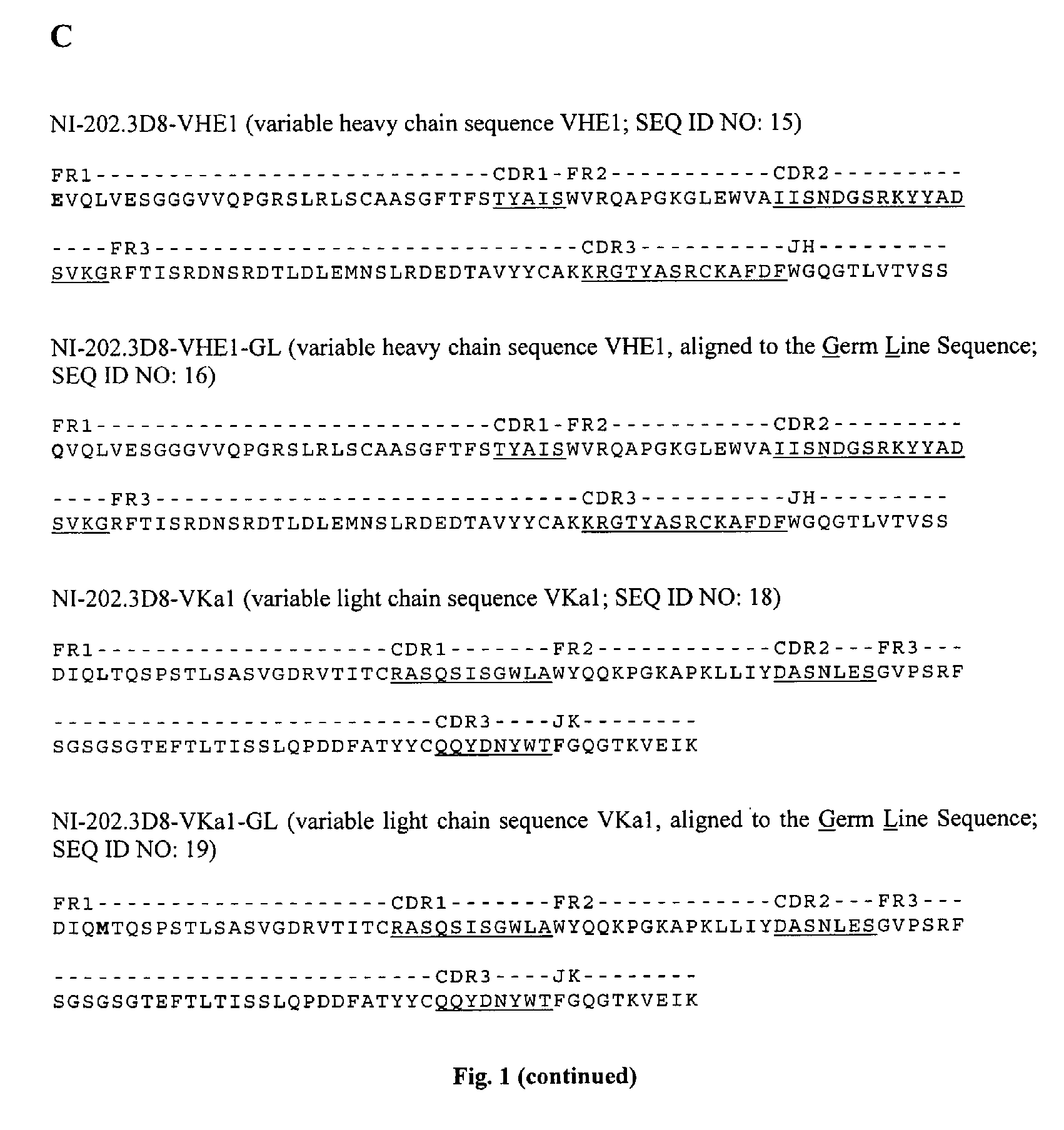Human anti-alpha-synuclein antibodies
a technology of alpha-synuclein and human antibody, which is applied in the field of new synuclein-specific binding molecules, can solve the problems of difficult to assess the therapeutic significance of autoantibodies, small oligomeric aggregates are particularly toxic, and lack of straightforward experimental approaches, so as to improve motor performance and improve the effect of plus maze behavior
- Summary
- Abstract
- Description
- Claims
- Application Information
AI Technical Summary
Benefits of technology
Problems solved by technology
Method used
Image
Examples
example 1
Identification of Human α-Synuclein-Specific Antibodies with Different Epitope Specificities
[0245]α-synuclein is a 140 amino acids (aa) long natively unfolded protein that is composed of three domains. These are the N-terminal amphipathic repeat region (1-60 aa), the center region (61-95 aa) and the acidic C-terminal region (96-140). To further understand the specificity of recombinant human α-synuclein antibodies, the domain of α-synuclein that contains the recognition sequence was determined. α-synuclein truncations 1-60 aa, 1-95 aa, 61-140 aa and 96-140 aa were coated at equal concentration onto ELISA plates and recombinant human α-synuclein autoantibodies NI-202.3G12 and NI-202.12F4 were then probed for binding to these truncations.
[0246]Interestingly, NI-202.3G12 does only bind to coated full length α-synuclein but not to any of the four tested truncations (FIG. 2A). This suggests that the recognition epitope of NI-202.3G12 is a structural motif rather than a linear primary rec...
example 2
The Human Antibodies are Specific for α-Synuclein
[0250]α-, β- and γ-synuclein are highly homologues proteins that are predominantly expressed in the nervous system, skeletal muscle and heart. However, only abnormal α-synuclein is linked to a broad spectrum of CNS diseases while β-synuclein is suggested to be an inhibitor of α-synuclein aggregation and may protect the central nervous system from the neurotoxic effects of α-synuclein. Thus (therapeutic) antibodies against pathological α-synuclein variants preferentially do not cross react with β- and γ-synuclein. In order to support specificity and potential therapeutic use of recombinant human anti-α-synuclein antibodies, the candidate antibodies were probed for α-, β- and γ-synuclein binding in a direct ELISA assay and by Western blotting (WB). First, recombinant α-, β- and γ-synuclein have been coated onto ELISA plates at equal coating concentration (2 μg / ml) and were then either incubated with a pan synuclein control antibody or r...
example 3
Binding Specificities of Antibody Ni-202.12F4
Specific Binding to Human α-Synuclein with a Preference for Aggregated α-Synuclein Species
[0253]To assess the binding of NI-202.12F4 to human and mouse α-synuclein, brain extracts were prepared from wild type and α-synuclein A53T transgenic mice and antibody binding was analyzed by Western blotting. NI-202.12F4 detects a prominent band corresponding to α-synuclein in brain extracts from human A53T α-synuclein transgenic mice while such band is virtually absent in brain extracts from wild type mice (FIG. 5A), suggesting specific binding to human but not mouse α-synuclein. Similar results were obtained with the commercially available LB509 antibody Oakes et al., Neuroscience Letters 269 (1999), 13-16) directed against an epitope specific for human α-synuclein. In contrast, the commercially available antibody clone 42 (van der Putten et al., J. Neurosci. 20 (2000), 6021-6029) which was reported to bind α-synuclein of both species, detected h...
PUM
| Property | Measurement | Unit |
|---|---|---|
| concentration | aaaaa | aaaaa |
| concentration | aaaaa | aaaaa |
| concentrations | aaaaa | aaaaa |
Abstract
Description
Claims
Application Information
 Login to View More
Login to View More - R&D
- Intellectual Property
- Life Sciences
- Materials
- Tech Scout
- Unparalleled Data Quality
- Higher Quality Content
- 60% Fewer Hallucinations
Browse by: Latest US Patents, China's latest patents, Technical Efficacy Thesaurus, Application Domain, Technology Topic, Popular Technical Reports.
© 2025 PatSnap. All rights reserved.Legal|Privacy policy|Modern Slavery Act Transparency Statement|Sitemap|About US| Contact US: help@patsnap.com



